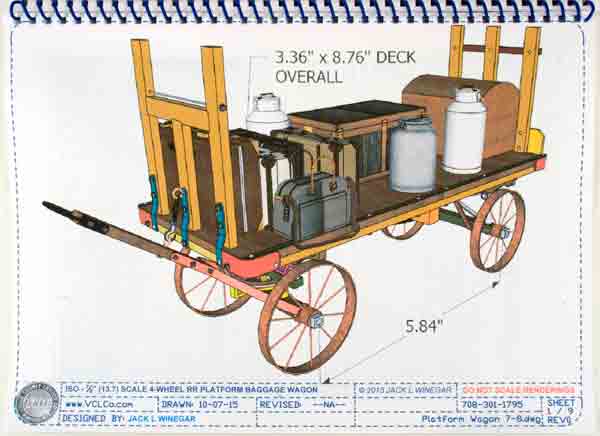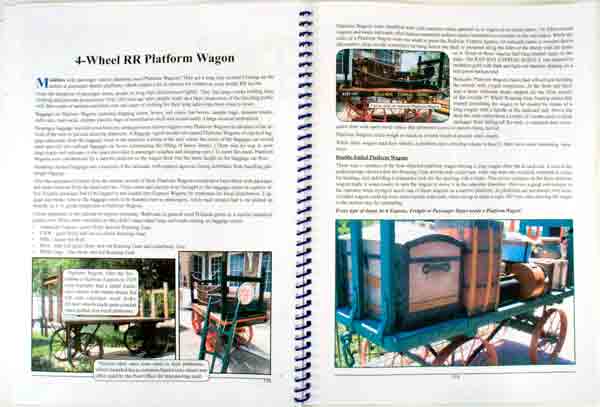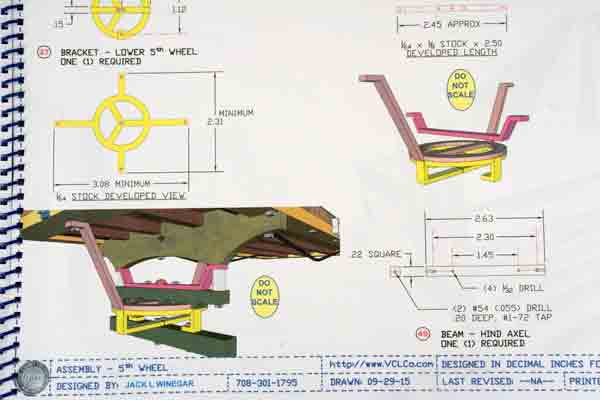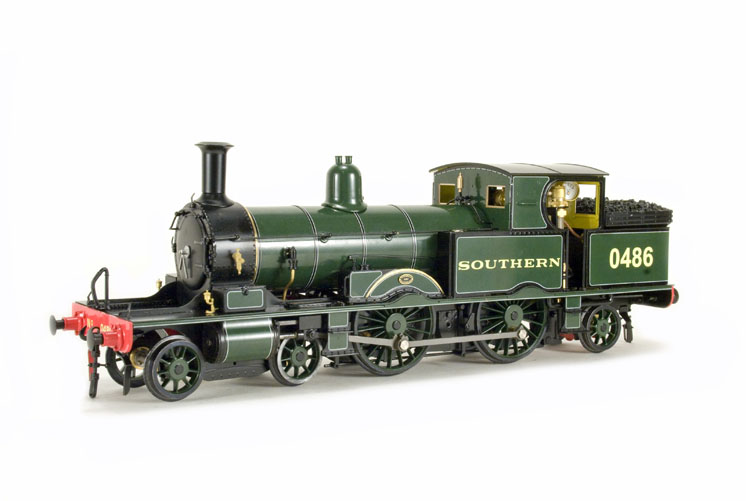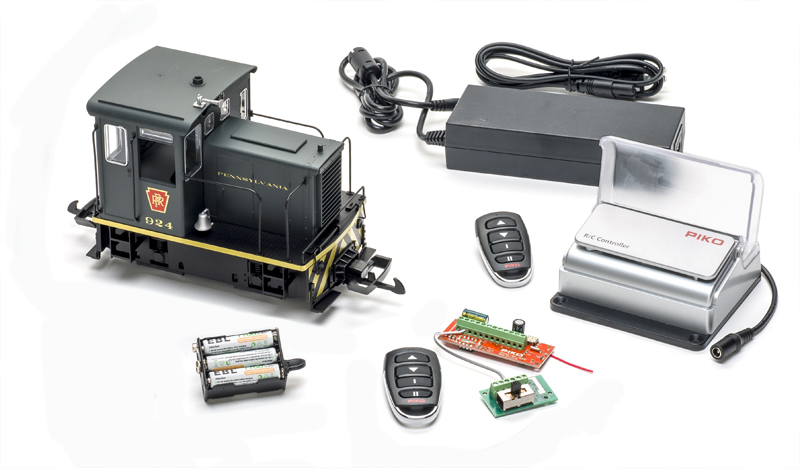Vilas County Lumber Company
12306 Lakeview Trail
Homer Glen IL 60491
Prices: 1:24, $12; 1:13.7, $14
Website: www.VCLCo.com
Comprehensive plan set for the construction of a station-platform baggage wagon; six 91/2″ x 13″ pages and seven (1:24) or nine (1:13.7) 13″ x 19″ pages; spiral bound; printed in color; computer-generated drawings; fraction/decimal/millimeter chart included; decimal/inch conversion chart for four model scales included; scale conversion to other scales chart included
Pros: History, description, and prototype photos included; all parts numbered and cross referenced; easy-to-understand drawings; dimensions are actual for the scale of the plans
Cons: Parts’ materials not always clear; if you want to lay the sheets side by side, you’ll have to remove them from the spiral binding
Each plan set is prefaced by three smaller sheets. These depict the finished wagon, followed by a description of full-size wagons and their function on the station platform. Colors and variations of the vehicles are discussed and there are photos of three different prototype wagons (there was a lot of variation in the prototype station wagons).
The actual plans begin with perspective drawings of different views of the wagon. Each part is clearly numbered. These numbers can be cross-referenced with the individual part drawings and also the parts list. The latter gives the part number; name of the part; name of a manufacturer (either of a part or a material); the material; quantity required; and notes. The “Material” column in the list, unfortunately, does not list the actual material in most cases (i.e., wood, metal, etc,); instead, it lists the manufacturer’s part number. So, if you are building the model from raw stock, you’ll have to figure out the appropriate material for various parts from the drawings or the photos, if it isn’t obvious.
Aside from that quibble, I found the drawings to be excellent. Construction notes were often included for assemblies. If a standard 2-D drawing is not sufficient to explain an assembly, a 3-D drawing is provided. I had no difficulty at all in following the plans. For the novice, some knowledge of drafting conventions might be beneficial.
The drawings cover the construction of every part. The model goes together just like the prototype. If you’re working in 1/2″ scale (or even the larger scale), some modeling skill and experience will be required to build to the plans. However, there are various ways the project could be simplified.
I’m pleased to see these plan sets. Not only do they provide a challenging modeling project, they educate the builder as to how the full-size wagon was manufactured. I look forward to seeing more of these.





